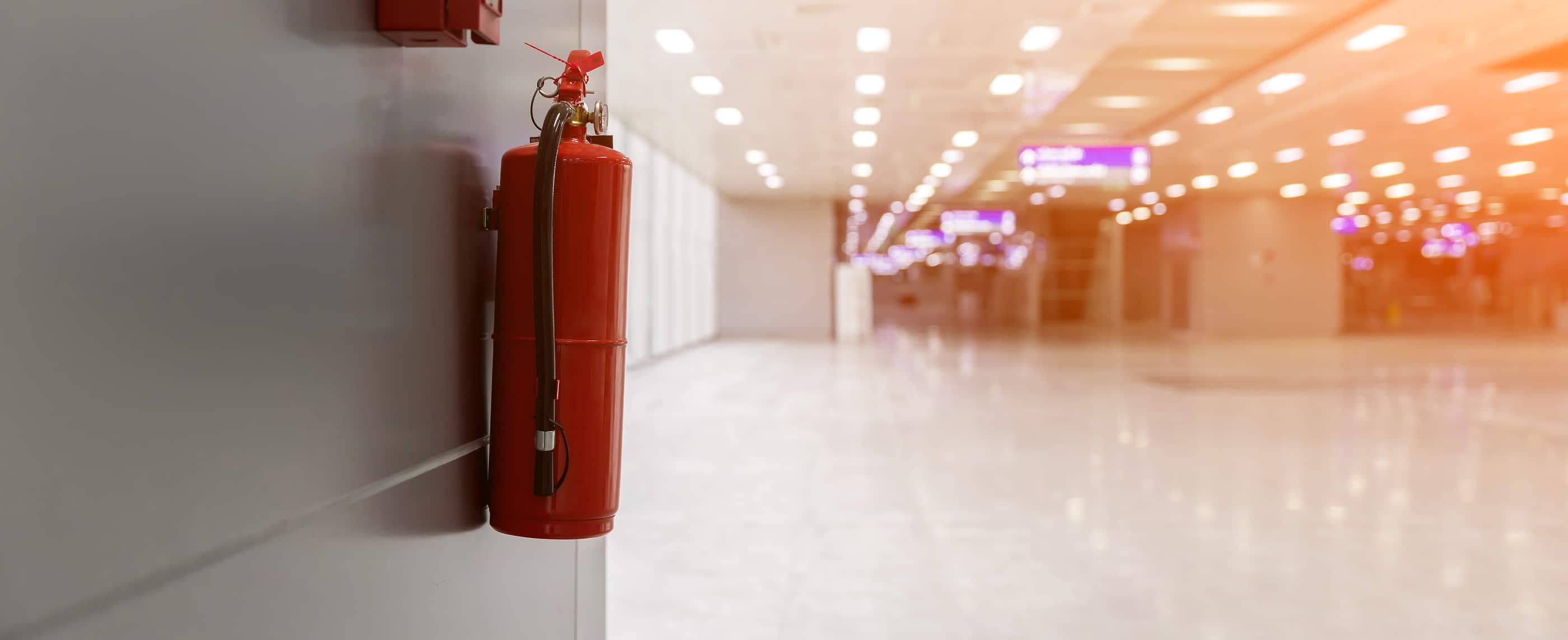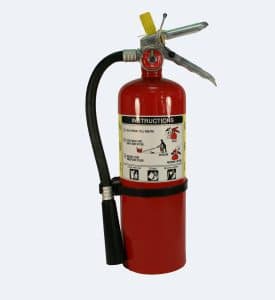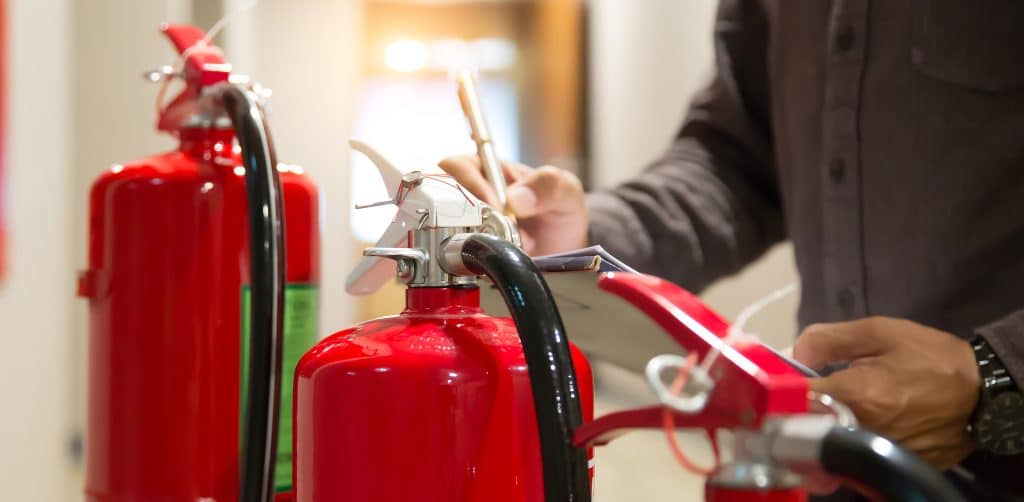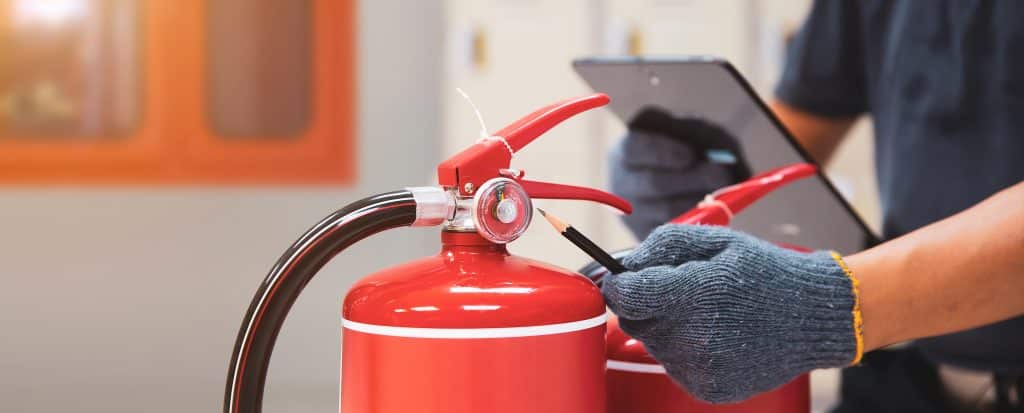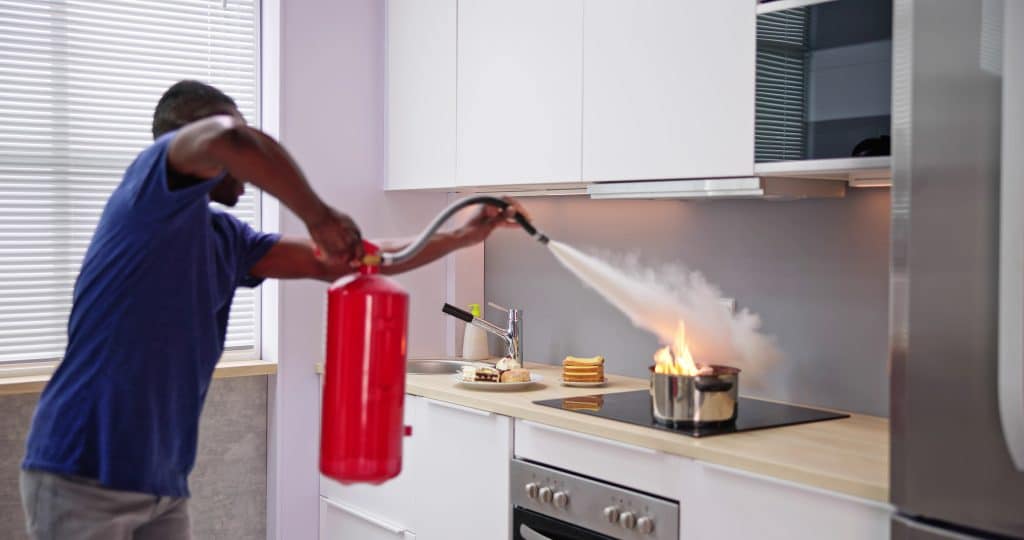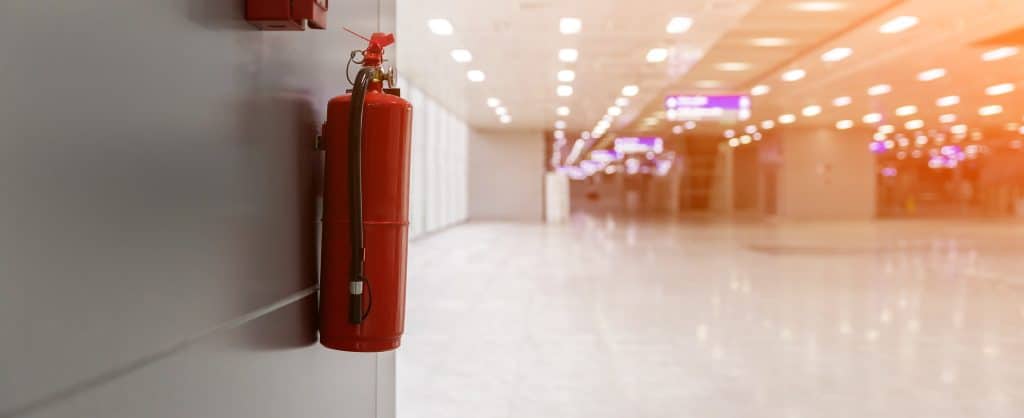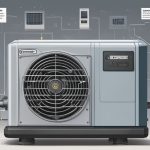Introduction to Fire Extinguishers
Fire is a powerful and destructive force that can significantly threaten life and property. Fire safety is paramount in homes, businesses, and public spaces. One of the fundamental tools for fire prevention and control is the fire extinguisher. This introduction will provide an overview of fire extinguishers, their importance, and the basics needed to choose the right one for your needs.
The Importance of Fire Extinguishers:
Fire extinguishers are portable devices designed to suppress or extinguish small fires in their early stages. Their primary purpose is to prevent fires from spreading and causing further damage. They are crucial to any fire safety plan and can be the first line of defense when a fire breaks out.
Different Types of Fires:
Fires are classified into different types based on the materials or substances fueling them. The classification system helps choose the fire extinguisher type for the specific fire. Here are the common fire classes:
- Class A: These are fires fueled by ordinary combustibles such as wood, paper, cloth, and plastics.
- Class B: These fires involve flammable liquids like gasoline, oil, or grease.
- Class C: Class C fires are electrical fires, often involving live electrical equipment.
- Class D: These fires involve combustible metals like magnesium or titanium.
- Class K: Class K fires are in commercial kitchens, particularly those involving cooking oils and fats.
Each type of fire requires a different extinguishing agent to be effectively controlled or put out. Using the right type of fire extinguisher can be effective and safe.
The Fire Extinguisher: Your First Line of Defense:
Fire extinguishers are designed to be user-friendly and portable. They typically consist of a cylindrical pressure vessel containing an extinguishing agent under pressure. When the device is activated, the agent is released in a stream or spray to smother the fire and extinguish it.
In the following sections of this guide, we will delve deeper into the various types of fire extinguishers, their ratings, proper usage, maintenance, and legal regulations. Understanding these aspects will empower you to make informed decisions about the right fire extinguisher for your specific needs, whether at home, in a business, or a public facility. Fire safety is a shared responsibility; knowing how to use this crucial tool is a step towards a safer environment for everyone.
Types of Fire Extinguishers
Fire extinguishers come in various types, each designed to combat fires fueled by different materials. Understanding these types is crucial to selecting the right extinguisher for specific fire hazards. Here are the common types of fire extinguishers:
1. Class A Fire Extinguishers:
- Suitable for: Fires fueled by ordinary combustibles like wood, paper, cloth, and plastics.
- Extinguishing Agent: Water or dry chemical agents (typically monoammonium phosphate).
2. Class B Fire Extinguishers:
- Suitable for: Fires involving flammable liquids, such as gasoline, oil, grease, and solvents.
- Extinguishing Agent: Dry chemical agents (sodium bicarbonate, potassium bicarbonate, or monoammonium phosphate) or carbon dioxide (CO2).
3. Class C Fire Extinguishers:
- Suitable for: Electrical fires, which involve live electrical equipment.
- Extinguishing Agent: Non-conductive agents like CO2 or dry chemical agents.
4. Class D Fire Extinguishers:
- Suitable for: Fires involving combustible metals, like magnesium, titanium, or sodium.
- Extinguishing Agent: Specialty dry powder agents designed for specific metal types.
5. Class K Fire Extinguishers:
- Suitable for: Commercial kitchen fires, typically involving cooking oils and fats.
- Extinguishing Agent: Wet chemical agents that create a foam to suppress the fire and cool the cooking oil.
6. Class ABC Fire Extinguishers:
- Suitable for: A versatile option for Class A, B, and C fires, making them a common choice for general fire protection.
- Extinguishing Agent: Dry chemical agents like monoammonium phosphate or ammonium sulfate.
7. Class BC Fire Extinguishers:
- Suitable for: Fires fueled by flammable liquids and electrical equipment, making them a suitable option for garages or workshops.
- Extinguishing Agent: Dry chemical agents, typically sodium bicarbonate or potassium bicarbonate.
8. Class AB Fire Extinguishers:
- Suitable for: Fires involving common combustibles and flammable liquids.
- Extinguishing Agent: Dry chemical agents provide a combined solution for Class A and B fires.
9. Class DK Fire Extinguishers:
- Suitable for: Combating fires involving combustible metals and cooking oils, making them suitable for certain industrial kitchens.
- Extinguishing Agent: A combination of specialty dry powder agents.
10. Class AF Fire Extinguishers:
– Suitable for Fires fueled by flammable liquids, often found in industrial settings.
– Extinguishing Agent: Aqueous film-forming foam (AFFF) suppresses flammable liquid fires.
11. Clean Agent Fire Extinguishers:
– Suitable for Fires involving sensitive equipment or materials as they leave no residue.
– Extinguishing Agent: Halon or clean agents like FM-200 or Novec 1230.
It’s essential to match the type of fire extinguisher to the specific fire hazards in your environment. Using the right extinguisher can be effective and safe. For comprehensive fire protection, it’s often advisable to have multiple extinguishers or an all-purpose Class ABC extinguisher strategically placed in your home, workplace, or facility.
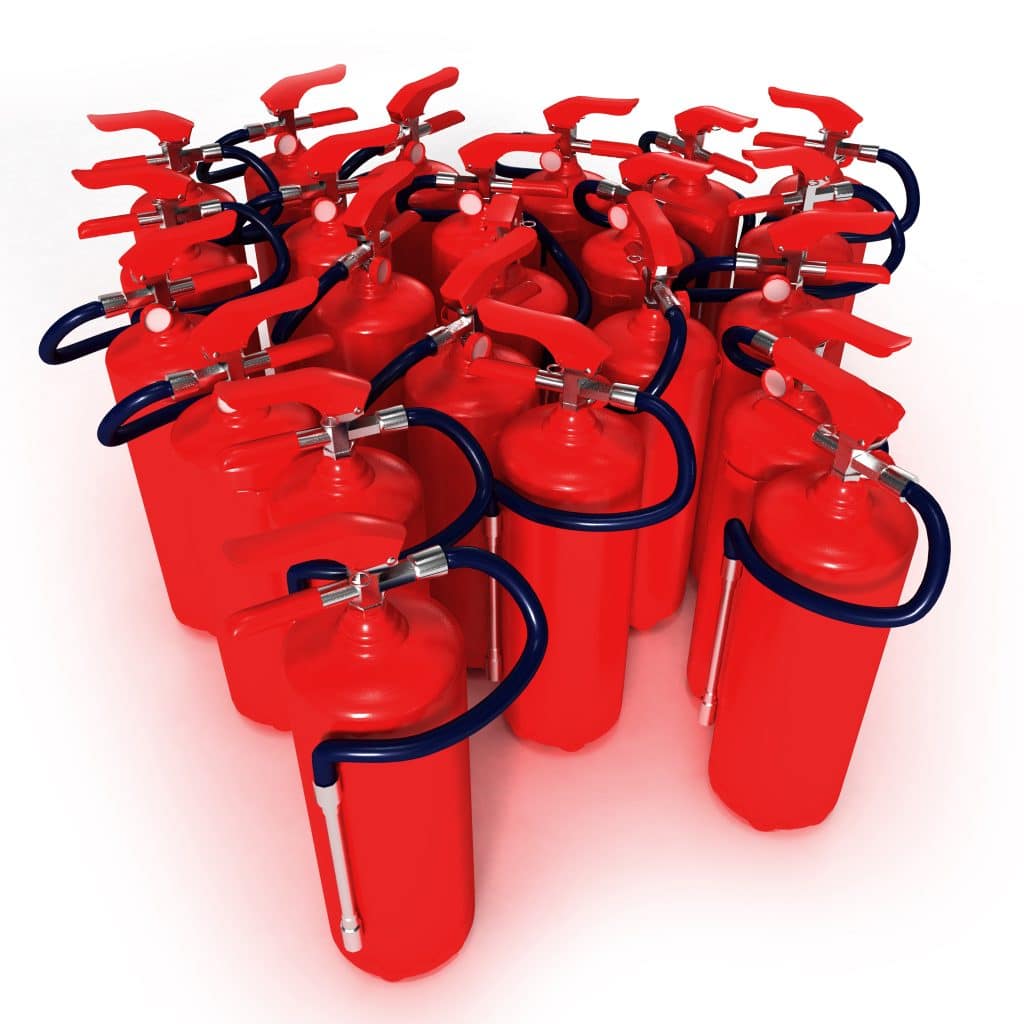
Group of red fire extinguishers on a white background
Pros and Cons of Various Extinguisher Types
Each type of fire extinguisher has pros and cons, and the choice of which one to use depends on the specific fire hazards you anticipate. Here’s a breakdown of the pros and cons of various fire extinguisher types:
1. Class A Fire Extinguishers:
- Pros:
- Effective against common combustibles.
- Water-based options are economical and readily available.
- Cons:
- Water-based extinguishers are not suitable for electrical fires and may cause electrocution.
- Dry chemical variants can leave a residue that requires cleanup.
2. Class B Fire Extinguishers:
- Pros:
- Effective against flammable liquid fires.
- Versatile and suitable for garages and workshops.
- Cons:
- Dry chemical extinguishers can leave a residue.
- It is not recommended for cooking oil or electrical fires.
3. Class C Fire Extinguishers:
- Pros:
- Suitable for electrical fires, as they do not conduct electricity.
- Cons:
- Limited to electrical fires; not effective against other fire classes.
- The most common type, dry chemical extinguishers, can leave a residue.
4. Class D Fire Extinguishers:
- Pros:
- Designed for specific metal fires.
- Essential for environments with combustible metals.
- Cons:
- Highly specialized and not suitable for other fire types.
- Limited availability compared to other extinguisher types.
5. Class K Fire Extinguishers:
- Pros:
- Ideal for commercial kitchens.
- Creates a foam to suppress cooking oil fires.
- Cons:
- Limited utility beyond kitchen fires.
- It can be more expensive than other types.
6. Class ABC Fire Extinguishers:
- Pros:
- Versatile and suitable for common fire types.
- The most common type of fire extinguisher.
- Cons:
- It can leave a residue and require cleanup.
- It is less effective than specialized extinguishers for specific fires.
7. Class BC Fire Extinguishers:
- Pros:
- Suitable for flammable liquids and electrical fires.
- Versatile option for garages and workshops.
- Cons:
- It can leave a residue that requires cleaning.
- It could be better for solid combustibles.
8. Class AB Fire Extinguishers:
- Pros:
- Effective against common combustibles and flammable liquids.
- Versatile for general fire protection.
- Cons:
- It may leave a residue that needs cleaning.
- It is less effective than specialized extinguishers for specific fires.
9. Class DK Fire Extinguishers:
- Pros:
- Suitable for combustible metals and cooking oils.
- Ideal for specific industrial kitchen environments.
- Cons:
- Limited utility beyond these specialized fire types.
- Availability may be limited compared to other types.
10. Class AFFF Fire Extinguishers:
– Pros:
– Effective against flammable liquid fires.
– Suitable for industrial settings.
- Cons:
- It can leave a residue.
- It could be better for other fire types.
11. Clean Agent Fire Extinguishers:
- Pros:
- Leave no residue, making them suitable for sensitive equipment and materials.
- Ideal for areas where cleanup is a concern.
- Cons:
- It can be more expensive than other types.
- Limited availability compared to common extinguisher types.
Choosing the right type of fire extinguisher depends on your specific fire risks and needs. It’s often recommended to have a combination of extinguishers or an all-purpose Class ABC extinguisher in general locations for comprehensive fire protection. Proper training in fire extinguisher use is also essential to ensure effective response during a fire emergency.
Understanding Fire Extinguisher Ratings
Understanding fire extinguisher ratings is crucial for choosing the right extinguisher to combat specific fire hazards effectively. Fire extinguisher ratings provide information about the types of fires a particular extinguisher can be used on and its extinguishing capacity. The ratings are typically indicated on the fire extinguisher’s label using a combination of letters and numbers.
Here’s what the letters and numbers in fire extinguisher ratings mean:
1. Class A Rating:
- This indicates the extinguisher’s effectiveness against Class A fires involving common combustibles like wood, paper, and cloth.
- The number associated with Class A (e.g., 1A, 2A, 3A) represents the extinguisher’s relative effectiveness, with a higher number indicating a larger capacity.
2. Class B Rating:
- A Class B rating shows the extinguisher is suitable for flammable liquid fires, including gasoline, oil, and grease.
- Like Class A, the number associated with Class B (e.g., 1B, 2B, 3B) represents the extinguisher’s capacity to suppress these fires.
3. Class C Rating:
- Class C ratings are not provided as a number. Instead, a “C” indicates that the extinguisher is safe to use on electrical fires involving live electrical equipment.
- Extinguishers with a Class C rating use non-conductive extinguishing agents.
4. Class D Rating:
- Class D-rated extinguishers are designed for fires involving combustible metals like magnesium or titanium.
- The rating does not include a number; instead, it specifies that the extinguisher is appropriate for this specialized fire hazard.
5. Class K Rating:
- The Class K rating is used for fire extinguishers suitable for commercial kitchen fires, particularly those involving cooking oils and fats.
- Like Class A and Class B, the rating is followed by a number (e.g., 1K, 2K) to indicate the extinguisher’s capacity.
6. Class ABC or BC Ratings:
- Extinguishers designed for use on multiple fire types are given combined ratings.
- The Class ABC rating is for extinguishers suitable for Class A, B, and C fires.
- The Class BC rating is for extinguishers effective against Class B and Class C fires.
- The numbers following these ratings indicate their capacity to suppress the respective fires.
Understanding these ratings is vital for selecting the appropriate extinguisher for your environment. Using an extinguisher with the wrong rating may be ineffective or even dangerous. A Class ABC or Class BC extinguisher is versatile if you need fire protection against various fire types. However, assessing your specific fire risks and consulting local fire safety regulations is essential to ensure compliance.
Choosing the Right Size
Choosing the right size of a fire extinguisher is essential to ensure you have an adequate supply of extinguishing agents to combat a fire effectively. The size of a fire extinguisher is typically indicated by its capacity in gallons or pounds of extinguishing agent. Here are some factors to consider when selecting the right size:
- Assess the Fire Risk: Evaluate the specific fire risks in your environment. Consider the types of materials present and their flammability. High-risk areas may require larger extinguishers.
- Understand the Fire Rating: The fire rating (e.g., 2A, 10B, C) on the extinguisher label can help determine the extinguishing capacity. For example, a 2A-rated fire extinguisher has twice the extinguishing capacity of a 1A-rated one for Class A fires.
- Evaluate Space Size: Consider the size of the space where you’ll place the extinguisher. Smaller areas may require smaller extinguishers, while larger spaces need larger ones.
- Comply with Regulations: Be aware of local fire safety regulations and guidelines. These regulations may specify minimum requirements for fire protection equipment in certain settings.
- Assess Accessibility: Ensure that the extinguisher is easily accessible. It should be mounted in a visible and convenient location. The size should not impede access or use during a fire emergency.
- Consider Multiple Extinguishers: In larger or high-risk areas, it’s often more practical to have multiple smaller extinguishers rather than one large one. This ensures that there are extinguishers within close reach of various areas.
- Know the Weight: Consider the physical capability of the individuals who may need to use the extinguisher. Larger extinguishers are heavier, and using them may require more strength.
- Seek Professional Advice: If you need more clarification about the right size, it’s advisable to consult a fire safety professional. They can provide guidance based on your specific needs and circumstances.
Here are some common sizes for fire extinguishers and their typical applications:
- 2.5 lbs to 5 lbs: Suitable for small spaces, such as a car, or specific use cases like a kitchen.
- 5 lbs to 10 lbs: Appropriate for general home use and small office spaces.
- 10 lbs to 20 lbs: Ideal for larger residential or commercial areas.
- 20 lbs or larger: Used in industrial settings or areas with high fire risks.
Remember that choosing the right size and maintaining the extinguisher properly is crucial. This includes regular inspections, recharging when necessary, and ensuring the extinguisher is within its service life. Proper maintenance ensures the extinguisher will function correctly during a fire emergency.
Maintenance and Inspection
Proper maintenance and regular inspections are essential to ensure that your fire extinguisher is in good working condition and will be effective in case of a fire emergency. Here’s a guide on how to maintain and inspect your fire extinguisher:
Monthly Visual Inspection:
- Check the Pressure Gauge: Most fire extinguishers have a pressure gauge that shows the pressure of the extinguishing agent. Ensure the needle is in the green zone, indicating the correct pressure. If the needle is in the red zone or outside the green zone, the extinguisher may need to be recharged.
- Inspect the Safety Pin and Seal: Ensure the safety pin is in place and the tamper seal is intact. If the seal is broken or missing, it could be a sign of tampering or use.
- Look for Physical Damage: Inspect the extinguisher for any physical damage, such as dents, corrosion, or leaks. If you notice any damage, contact a professional to evaluate the extinguisher’s safety and functionality.
Annual Maintenance:
- Professional Inspection: Schedule an annual inspection by a qualified fire safety professional. They will thoroughly examine the extinguisher, including internal components, and perform any necessary maintenance or recharging.
Recharging and Servicing:
- Recharging: Fire extinguishers should be recharged after each use or as indicated by a professional inspection. Recharging involves refilling the extinguishing agent and ensuring the pressure is within the correct range.
- Hydrostatic Testing: Some fire extinguishers, especially those with metal containers, require hydrostatic testing every few years. This test checks the container’s integrity and ensures it can safely hold the pressure of the extinguishing agent.
Proper Storage:
- Location: Store the fire extinguisher in its designated location, ensuring it is easily accessible and visible. Common locations include near exits, in the kitchen, and near fire-prone areas.
- Mounting: Most fire extinguishers come with a wall mount or bracket. Ensure it is securely mounted at the recommended height and location. Make sure it is easily reachable for all users.
User Training:
- Educate Users: Ensure that people near the extinguisher are trained in its proper usage. Familiarize them with the PASS method (Pull the pin, Aim at the base of the fire, Squeeze the handle, Sweep from side to side).
- Regular Drills: Conduct fire safety drills and exercises to prepare individuals to use the extinguisher in emergencies.
Fire Extinguisher Replacement:
- Expiry Date: Fire extinguishers have a limited service life, typically around 10-15 years. Check the label for the manufacture date and replace the extinguisher when it reaches the end of its service life.
- Ineffective Extinguisher: If an extinguisher has been used and cannot be recharged or damaged beyond repair, it should be replaced.
Proper maintenance, inspections, and user education are vital for fire extinguisher readiness. Regularly scheduled professional inspections help identify issues that might not be visible during routine checks, ensuring your fire extinguisher remains a reliable safety tool.
Installation and Placement
Proper installation and placement of fire extinguishers are crucial to ensure they are readily accessible and effective in a fire emergency. Here are guidelines for the installation and placement of fire extinguishers:
1. Location:
- Place fire extinguishers near potential fire hazards and where fires are most likely. Common locations include kitchens, garages, workshops, and near electrical panels.
2. Visibility:
- Ensure that the extinguisher is visible and easily identifiable. Avoid hiding it behind obstacles or in cluttered areas.
3. Accessibility:
- Fire extinguishers should be easily accessible in case of a fire emergency. Users should not have to move obstacles or climb to reach them.
4. Mounting Height:
- Install the extinguisher at the recommended mounting height. This is usually about 3.5 to 5 feet (1 to 1.5 meters) above the floor. This height is accessible to most users and helps avoid potential damage from equipment or flooding.
5. Wall Mounting:
- Most fire extinguishers come with wall mounts or brackets. Securely mount the extinguisher using these provided tools. Make sure it is firmly attached to the wall.
6. Multiple Extinguishers:
- Consider installing multiple fire extinguishers in larger spaces or areas with multiple fire hazards. They should be evenly spaced to ensure adequate coverage.
7. Kitchen:
- In the kitchen, install a fire extinguisher near the cooking area but away from the stove or oven to avoid heat damage. Ensure it is easily accessible in case of cooking fires.
8. Garage and Workshop:
- In garages and workshops, place extinguishers near potential fire sources like power tools, flammable liquids, or electrical panels.
9. Electrical Panels:
- Install a fire extinguisher near electrical panels and fuse boxes, as electrical fires can be hazardous. Ensure the extinguisher has a Class C rating suitable for electrical fires.
10. Outdoor Areas:
- For outdoor areas, consider using weather-resistant fire extinguishers and ensure they are protected from the elements.
11. Stairs and Hallways:
- Fire extinguishers should not obstruct pathways, stairs, or hallways. They should be easily accessible but not in the way of escape routes.
12. Near Exits:
- Install fire extinguishers near exit doors to provide easy access when evacuating a building. However, they should be on the inside, not the outside.
13. Vehicle and RV:
- Consider installing a small, automotive-rated fire extinguisher inside if you have a vehicle or RV. Secure it in a location easily accessible from the driver’s seat.
14. Consider Specialized Locations:
- In specific settings like industrial facilities or laboratories, consult with fire safety professionals to determine the ideal placement and type of extinguishers required.
15. Label and Signage:
- Add clear signage near the extinguisher, indicating its type and usage instructions. This helps users quickly identify the extinguisher and understand how to use it.
Following local fire safety regulations and guidelines regarding fire extinguisher placement is crucial. Regularly inspect the extinguisher to ensure it remains in good condition and replace it when it reaches the end of its service life or if it has been used. Proper installation and placement and regular maintenance ensure that your fire extinguishers are reliable for fire protection.
Training and Proper Usage
Proper training in the use of fire extinguishers is essential to ensure that individuals can respond effectively in the event of a fire emergency. Here are the key steps for training and the proper usage of fire extinguishers:
1. Education and Familiarization:
- Before using a fire extinguisher, individuals should receive proper training in fire safety and understand the types of fires that can be safely extinguished with the extinguisher. This education should cover the various classes of fires (A, B, C, D, K) and the appropriate fire extinguisher ratings.
2. PASS Method:
- Teach the PASS method (Pull, Aim, Squeeze, Sweep) for using a fire extinguisher effectively:
- Pull: Remove the safety pin to unlock the extinguisher.
- Aim: Point the nozzle or hose at the base of the fire, not the flames.
- Squeeze: Squeeze the handle to discharge the extinguishing agent.
- Sweep: Move the nozzle or hose from side to side to cover the entire fire area.
3. Hands-On Training:
- Provide hands-on training, including live-fire exercises, whenever possible. Simulated fire training can help individuals gain practical experience in using extinguishers.
4. Location Awareness:
- Ensure individuals know the location of fire extinguishers in their vicinity and how to access them quickly in an emergency.
5. Limitations and Safety:
- Emphasize that fire extinguishers have limitations. They are suitable for small fires in their early stages. Encourage individuals to prioritize their safety and evacuate if the fire is large, spreading rapidly, or beyond the capacity of the extinguisher.
6. Reporting and Recharging:
- Teach individuals to report any use of a fire extinguisher to the responsible authorities or management so that the extinguisher can be recharged or replaced.
7. Regular Refreshers:
- Provide periodic refresher training to ensure individuals retain their fire extinguisher knowledge and skills.
8. Specialized Extinguishers:
- If your facility or home has specialized fire extinguishers (e.g., Class D for metal fires), ensure that those needing to use them are trained specifically for these extinguisher types.
9. Supervision and Responsibility:
- Designate responsible individuals trained to use fire extinguishers in various areas of your facility. Ensure they are aware of their responsibilities and are periodically recertified.
10. Emergency Response Plans:
- Integrate the use of fire extinguishers into your overall emergency response plan. Ensure that everyone knows their roles and responsibilities during a fire emergency.
11. Call for Professional Help:
- Emphasize that even after using a fire extinguisher, individuals should still call the fire department to ensure proper extinguishment and to assess the situation.
Proper training in fire extinguisher usage helps individuals respond promptly and effectively to fires, potentially preventing the situation from escalating. Regular drills and training exercises can boost confidence and readiness. Remember that while fire extinguishers are valuable safety tools, personal safety should always be the top priority, and individuals should evacuate if the fire becomes unmanageable.
Legal Regulations and Compliance
Compliance with legal regulations and standards regarding fire extinguishers is crucial to ensure the safety of individuals and property. These regulations vary by location and may encompass federal, state, and local requirements. Below are some key aspects to consider:
1. Federal Regulations:
- In the United States, the Occupational Safety and Health Administration (OSHA) mandates that employers provide portable fire extinguishers and that employees are trained to use them when required. OSHA’s standards are based on the National Fire Protection Association (NFPA) codes and standards.
2. State and Local Regulations:
- State and local governments often have fire safety regulations that may exceed federal requirements. These regulations can include specific requirements for fire extinguisher types, installation, maintenance, and training.
3. NFPA Standards:
- The NFPA provides standards for fire safety, including the selection, installation, inspection, and maintenance of fire extinguishers. The NFPA 10, Standard for Portable Fire Extinguishers, is widely adopted as a reference for fire extinguisher compliance.
4. Building Codes:
- Building codes may include requirements for installing and placing fire extinguishers in various occupancies and settings, such as residential, commercial, industrial, and healthcare facilities.
5. Ongoing Maintenance:
- Many regulations stipulate that fire extinguishers must be regularly inspected and maintained by qualified personnel to ensure they remain in working order.
6. Accessibility and Visibility:
- Regulations often require that fire extinguishers be installed in visible and easily accessible locations, free from obstructions. There may also be height and mounting requirements.
7. Type and Rating:
- Regulations may specify the type and rating of fire extinguishers required in specific areas. For instance, commercial kitchens may require Class K extinguishers for grease fires.
8. Training and Education:
- Regulations can mandate training programs for employees and occupants on using fire extinguishers effectively and safely.
9. Emergency Lighting and Signage:
- In some cases, regulations may require emergency lighting and signage to guide individuals to the location of fire extinguishers.
10. Record Keeping:
- Compliance may include record-keeping requirements to document inspections, maintenance, and training.
11. Compliance Authorities:
- Identify the relevant compliance authorities in your jurisdiction responsible for enforcing fire safety regulations. These may include local fire departments, building inspectors, or other governmental agencies.
It’s essential to consult with local authorities or a fire safety professional to ensure that your fire extinguisher installations and practices comply with all applicable regulations. Failure to meet these requirements could result in fines, legal liabilities, and, more importantly, compromised safety in the event of a fire. Stay informed about updates or changes to fire safety regulations to maintain compliance.
Business and Residential Requirements
The requirements for fire extinguishers in business and residential settings may vary based on the type of occupancy, local regulations, and specific safety considerations. Here are the key distinctions between business and residential requirements:
Business Requirements:
- Occupancy Type: Business requirements often depend on the type of occupancy. For instance, fire extinguisher requirements in an office building may differ from those in a restaurant, manufacturing facility, or healthcare institution.
- Fire Safety Plans: Businesses are typically required to have comprehensive fire safety plans that include the installation of fire extinguishers, exit routes, alarm systems, and employee training.
- Specific Fire Hazards: Different businesses have different fire hazards. The type and placement of fire extinguishers should be determined based on the specific hazards present. For example, a commercial kitchen would require Class K fire extinguishers for grease fires.
- Regulatory Compliance: Businesses must adhere to federal, state, and local regulations, as well as industry-specific standards. OSHA, NFPA, and other organizations set guidelines for businesses to follow.
- Regular Inspections: Businesses typically require regular fire extinguisher inspections by certified professionals. Records of these inspections must be maintained.
Residential Requirements:
- Single-Family Homes: In many residential settings, there are no specific requirements for fire extinguishers in single-family homes. However, having at least one multi-purpose (ABC) fire extinguisher in a convenient location is recommended.
- Multi-Family Dwellings: Apartment buildings or condominiums may have different requirements, which the property management or local regulations could set. Common areas in multi-family dwellings should have fire extinguishers.
- Kitchen Fire Safety: In residential settings, the kitchen is a common area where fires occur. Having a fire extinguisher within reach is advisable.
- Maintenance: Regardless of the setting, residential fire extinguishers should be regularly inspected to ensure they are in good working order.
- Training: While not legally required, residents should be educated on fire safety, including the proper use of fire extinguishers.
- Emergency Response Plan: Residents should have a basic emergency response plan, which may include fire extinguishers and evacuation procedures.
- Local Regulations: Local jurisdictions may have specific requirements or recommendations for residential fire safety. These should be checked and followed.
It’s important to note that while there may not be strict legal requirements for fire extinguishers in many residential settings, having at least one fire extinguisher in your home, especially in the kitchen and near bedrooms, is a responsible safety practice. Regular maintenance and inspections are essential to ensure their functionality. Additionally, educating family members on fire safety and the proper use of fire extinguishers can be life-saving in the event of a fire.
Top Fire Extinguisher Brands
When it comes to fire safety, choosing a reliable and trusted fire extinguisher brand is essential. Here are some of the top fire extinguisher brands known for their quality and effectiveness:
- Kidde: Kidde is one of the most recognized names in fire safety. They offer a wide range of fire extinguishers for residential and commercial use, including models suitable for different fire types.
- First Alert: First Alert is another well-known brand that provides fire safety products, including fire extinguishers. They offer various extinguisher types for different applications.
- Amerex: Amerex is a leading manufacturer of fire extinguishers, known for its quality and compliance with industry standards. They produce a wide range of extinguishers for commercial and industrial use.
- Ansul: Ansul specializes in fire suppression systems and extinguishers, particularly for industrial and commercial applications. They are renowned for their reliability in high-risk environments.
- Badger Fire Extinguishers: Badger offers a range of fire extinguishers for residential and commercial use. They are known for their durability and performance.
- Buckeye Fire Equipment: Buckeye Fire Equipment manufactures fire extinguishers designed for various industries, including aviation, healthcare, and commercial applications. They are known for their quality and compliance with safety standards.
- Amerex: Amerex is a trusted brand for commercial and industrial fire extinguishers. They produce various products suitable for different fire types and hazards.
- Buckeye Fire Equipment: Buckeye offers a variety of fire extinguishers for commercial, industrial, and residential use. They are known for their quality and compliance with safety standards.
- Strike First: Strike First is recognized for its durable fire extinguishers for commercial and industrial applications. They also offer residential models.
- Fireboy-Xintex: Fireboy-Xintex specializes in fire suppression systems, including marine and commercial fire extinguishers. They are well-regarded for their products’ effectiveness.
- ProLine: ProLine offers a range of fire extinguishers for various applications, from home use to commercial and industrial settings. They are known for their quality and affordability.
- Safety First Fire Equipment: Safety First Fire Equipment produces reliable fire extinguishers suitable for various applications.
When selecting a fire extinguisher, it’s essential to consider the type of fire you may encounter (Class A, B, C, D, or K), the size and location of the extinguisher, and any specific requirements for your environment. Additionally, regular inspections and maintenance are key to ensuring the reliability of your chosen fire extinguisher brand. Consult local fire safety regulations and consider professional advice to make the best choice for your specific needs.
Recommended models and product lines
Selecting a specific fire extinguisher model or product line depends on your needs and the fire hazards you may encounter. Here are some recommended models and product lines from reputable fire extinguisher brands for various applications:
For Home and Residential Use:
- Kidde Pro 210: This popular home fire extinguisher can handle Class A, B, and C fires. It’s suitable for general home fire safety.
- First Alert HOME1: This is an easy-to-use fire extinguisher for residential use. It’s effective against common household fires.
For Kitchen and Cooking Fires:
- Kidde Kitchen Fire Extinguisher: Kidde offers a specialized fire extinguisher for kitchen and cooking fires. It’s rated for Class K fires involving flammable cooking oils and fats.
For Office and Commercial Use:
- Amerex B456: This commercial-grade fire extinguisher is suitable for Class A, B, and C fires and is commonly used in office and commercial environments.
- Badger Advantage ABC Multipurpose Dry Chemical Extinguisher: This versatile commercial fire extinguisher can handle various fire types. It’s suitable for offices, warehouses, and retail spaces.
For Industrial and High-Risk Environments:
- Ansul Red Line Cartridge-Operated Fire Extinguishers: These fire extinguishers are designed for high-risk industrial settings and can handle complex fire hazards. They come in various sizes and configurations.
For Marine Applications:
- Fireboy-Xintex MA2 Automatic Discharge Marine Fire Extinguisher: This automatic fire suppression system is designed for marine applications. It’s essential for boat and yacht safety.
- Kidde Mariner 110 Fire Extinguisher: A compact and effective fire extinguisher for boats and marine vessels, suitable for Class B and C fires.
For Specialized Uses:
- Buckeye Fire Equipment Class D Extinguishers: These are ideal for environments with metal fires, such as industrial facilities with metalworking processes.
- Amerex Class K Kitchen Fire Extinguishers: Designed for commercial kitchens, these extinguishers are effective against fires involving cooking oils and fats.
Remember that the choice of a specific model or product line should be based on the fire hazards you may encounter, the size and location of the extinguisher, and any relevant local regulations. Regular maintenance, inspections, and training in fire extinguishers are essential to ensure their reliability. Consult with local fire safety professionals or authorities to determine the most suitable fire extinguisher for your needs.
Frequently Asked Questions (FAQs)
Certainly, here are some frequently asked questions (FAQs) about fire extinguishers:
1. What is a fire extinguisher?
- A fire extinguisher is a portable device designed to suppress small fires by discharging an extinguishing agent. It is a critical tool for fire safety.
2. How do fire extinguishers work?
- Fire extinguishers remove one or more elements of the fire triangle: heat, fuel, and oxygen. The extinguishing agent smothers the fire, disrupts the chemical reaction, or cools the flames.
3. What are the different classes of fires?
- There are five classes of fires:
- Class A: Ordinary combustibles (wood, paper, cloth).
- Class B: Flammable liquids (oil, gasoline, grease).
- Class C: Electrical fires.
- Class D: Combustible metals (magnesium, sodium).
- Class K: Cooking oils and fats (common in kitchens).
4. How do I choose the right fire extinguisher for my needs?
- The choice of a fire extinguisher depends on the types of fires you may encounter. Look for extinguishers that have the appropriate classification for the expected fire hazards.
5. How often should fire extinguishers be inspected?
- Fire extinguishers should be inspected regularly as specified by local regulations, which can vary. A common guideline is an annual inspection by a certified professional.
6. Can I use a fire extinguisher on any fire?
- Using the right extinguisher on a fire can be effective and dangerous. Always use an extinguisher rated for the specific fire class.
7. Can I recharge a fire extinguisher after use?
- Fire extinguishers can often be refilled or recharged after use. It’s essential to consult a professional for this service to ensure the extinguisher is fully operational.
8. How should I dispose of an old or expired fire extinguisher?
- Disposing of an old extinguisher should be done according to local regulations. Some fire departments or hazardous waste facilities accept old extinguishers. Never throw an extinguisher in the trash.
9. Do I need training to use a fire extinguisher?
- Training is recommended to use a fire extinguisher effectively and safely. Familiarize yourself with the PASS (Pull, Aim, Squeeze, Sweep) technique for using an extinguisher.
10. Where should fire extinguishers be placed in a building?
- Fire extinguishers should be placed in visible and easily accessible locations, such as near exits, kitchens, garages, and areas with potential fire hazards. Proper placement should follow local regulations.
11. How do I maintain a fire extinguisher?
- Fire extinguishers should be visually inspected monthly, and a professional inspection should be performed annually. Ensure that the pressure gauge is green, the seals are intact, and there is no physical damage.
12. Can I use a fire extinguisher in a confined space?
- Using a fire extinguisher in a confined space can deplete oxygen and be dangerous. It’s generally safer to evacuate and let firefighters handle the situation.
Remember that fire safety is a serious matter, and it’s essential to follow local regulations and seek professional guidance when needed. Fire extinguishers are important tools for fire safety, but they should be used with knowledge and caution.
Conclusion: A Safer Environment Awaits
In conclusion, ensuring a safer environment is paramount; fire safety is critical to achieving this goal. With their ability to swiftly and effectively combat small fires, fire extinguishers play a vital role in safeguarding lives and property.
By understanding the classes of fires and choosing the right fire extinguisher for your specific needs, you can empower yourself to respond effectively in a fire emergency. Regular inspections, maintenance, and training are essential to keep fire extinguishers in optimal working condition.
Whether in a residential, commercial, or industrial setting, the presence of well-maintained fire extinguishers is a testament to a commitment to safety. They provide peace of mind, knowing that you have a means to combat small fires before they escalate.
However, it’s crucial to remember that fire safety extends beyond fire extinguishers. It encompasses a comprehensive approach, including fire prevention, early detection, evacuation planning, and adherence to safety regulations.
By integrating all these elements, you contribute to a safer environment for yourself, your loved ones, and your community. Fire safety is a shared responsibility, and it begins with awareness, preparation, and the willingness to take action when needed.
In pursuing a safer environment, may you find confidence in your ability to respond to fire emergencies, and may your commitment to fire safety lead to a more secure and protected world.

